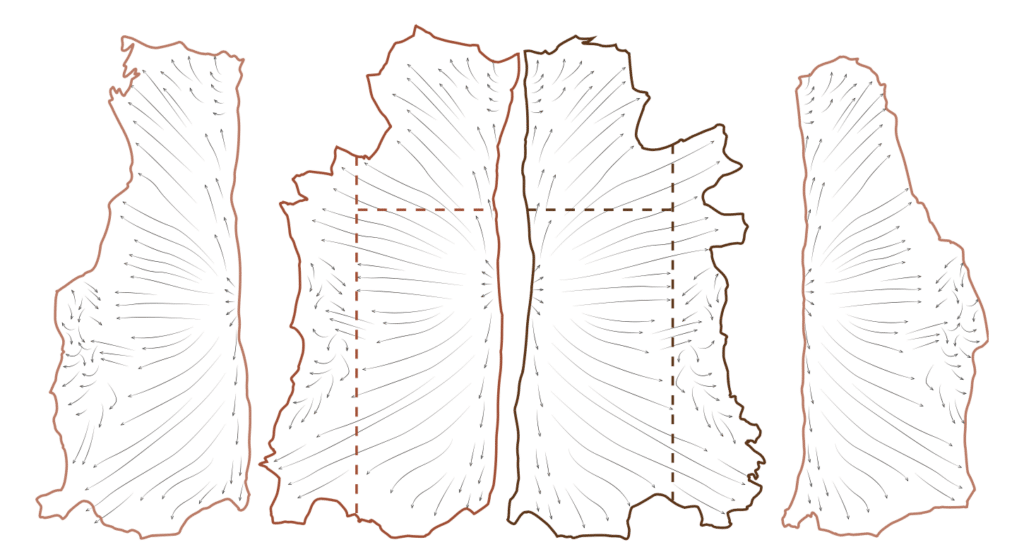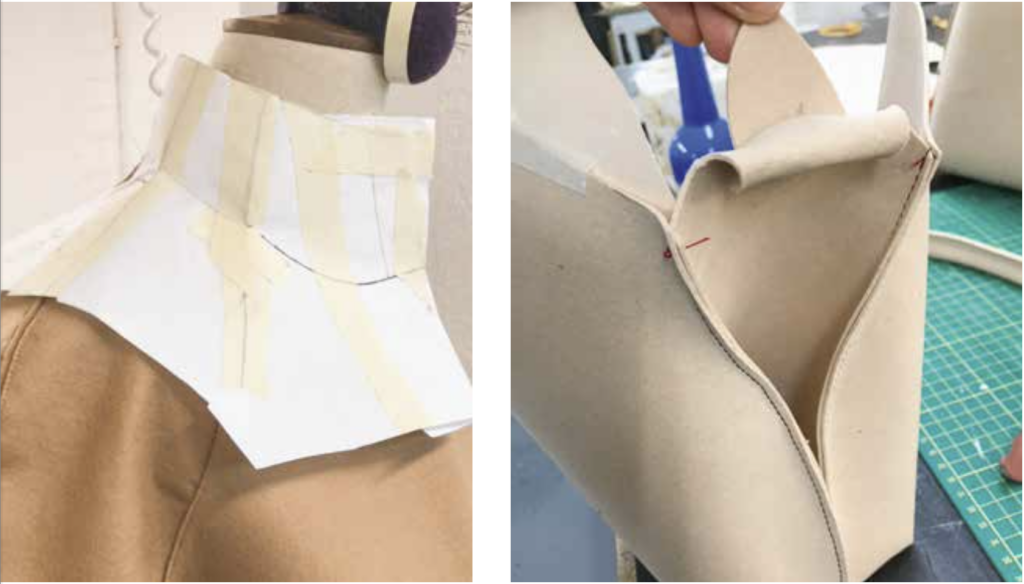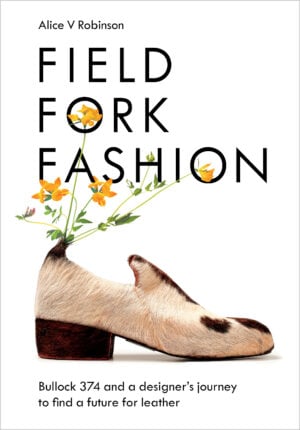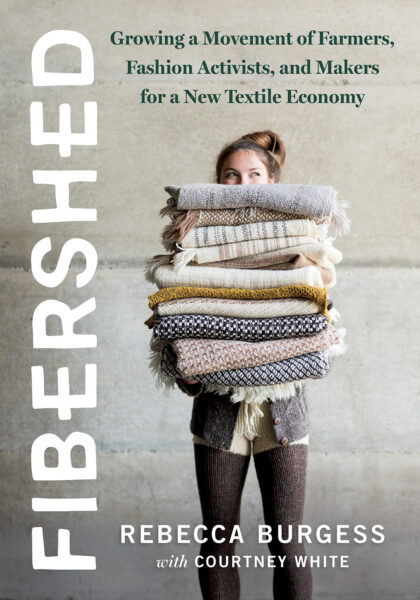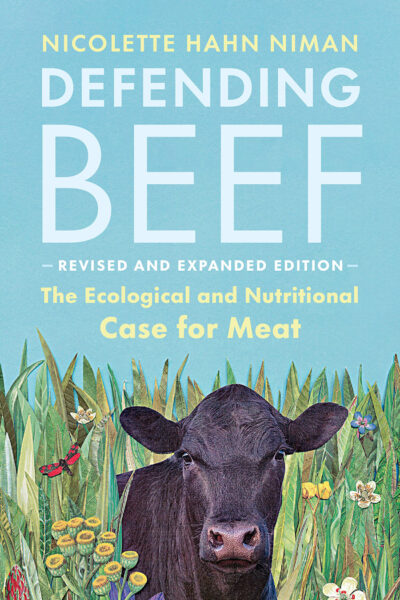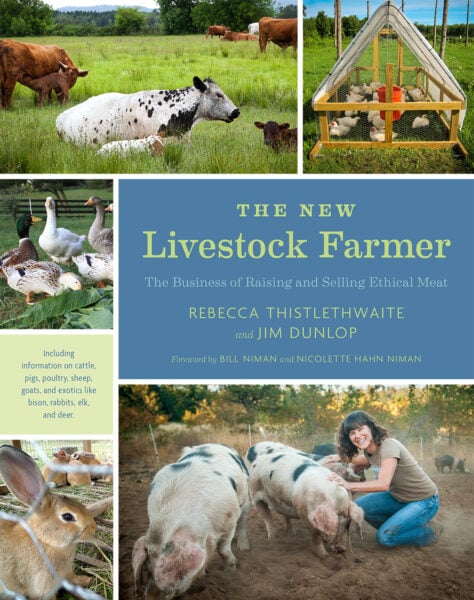Designing Leather Goods: Cutting & Shaping
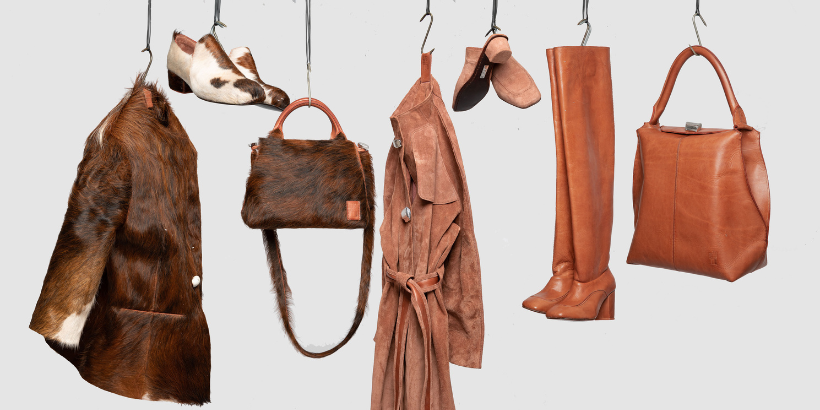
In a personal investigation into ethical and traceable leather, fashion designer Alice Robinson begins a ground-breaking journey into the origin story of leather and its connection to food and farming. Keep reading to learn more about her process of cutting & shaping leather to create handbags, shoes, clothing, and more!
The following is an excerpt from Field, Fork, Fashion by Alice V Robinson. It has been adapted for the web.
Cutting & Shaping Leather
‘Leather has a 3D memory, if you cut the shoulder of a cow, it will return. The power of the leather is stronger than the will of the designer’, words imparted years earlier by a production manager at a luxury Italian manufacturer, a warning that still rang true.
‘We roughly throw away half of the leather we order, because of the way in which we need to cut the specific pieces.’ I thought of this as I looked at the hide. It was evident some sections had more consistency than others and these areas only extended so far.
The Structure of Leather
Before I could design, I needed to consider how the structure of the leather changed within each side. Often in leather production these changes in fibre structure are distinguished by dividing the hide into sections, most commonly by the shoulders, backs (bends) and bellies, as each have a distinctively different feel.
I had previously seen these sections cut off before the tanning process began. First to go was the belly.
Shaping: Starting the Tanning Process
A continuous vertical strip cut from the side of the hide.Much like our bellies, it is softer and looser than the rest of the body. This sort of fibre structure makes it more susceptible to wrinkling once in the form of leather and so is less suited to applications where it may need to be stretch resistant.
With the belly removed from either side, the hide begins to look more rectangular.
Next to be separated is the shoulder, a horizontal division across the upper half of the body. Less dense in its fibre composition and sitting at the base of the neck, it is more flexible because of the head movements. Its consistent thickness makes the shoulder easy to work with and a popular part of the hide for bag making.
The piece that remains is called the butt – or if split again down the spine, each piece is called a bend – it has a tightly compact fibre structure making it the strongest and most consistent part of the hide. It is also the largest cut, almost rectangular apart from the bottom end tapering in the centre where the tail once was.
Recommended Reads
A “Farm-to-Closet” Vision for the Future of Sustainable Fashion
Recent Articles
Garden strawberries are excellent for both covering the ground and for growing fruit. If you’re planning out a forest garden, or are just looking for a plant to use as ground cover, strawberries are a great option. The following is an excerpt from The Home-Scale Forest Garden by Dani Baker. It has been adapted for…
Read MoreAsparagus is a delicious vegetable with a layered history. How did this aspiring spear make its way from growing in the wild to appearing on our plates? The following is an excerpt from the The Seed Detective by Adam Alexander. It has been adapted for the web. “Nature gives us the key to every secret…
Read MoreInterested in growing trees? Here are some tips on successfully planting, transplanting, and pruning trees to create a flourishing forest garden! The following is an excerpt from The Home-Scale Forest Garden by Dani Baker. It has been adapted for the web. Planting Potted Trees and Shrubs If you order potted trees, check with your supplier to…
Read MoreWith the right strategies and practices, composting on a small farm is surprisingly easy and inexpensive. Just follow these steps for making compost, and your farm will be thriving in no time! The following excerpt is from The Lean Farm Guide to Growing Vegetables by Ben Hartman. It has been adapted for the web. (All photographs by Ben…
Read MoreGarlic mustard: while known as “invasive,” this plant can be consumed in its entirety and has great nutritional value. Plus, the garlic-flavor is a perfect addition to any recipe that calls for mustard! The following are excerpts from Beyond the War on Invasive Species by Tao Orion and The Wild Wisdom of Weeds by Katrina…
Read More

